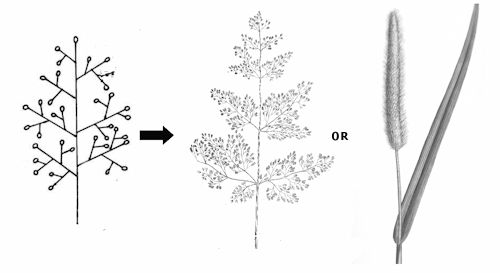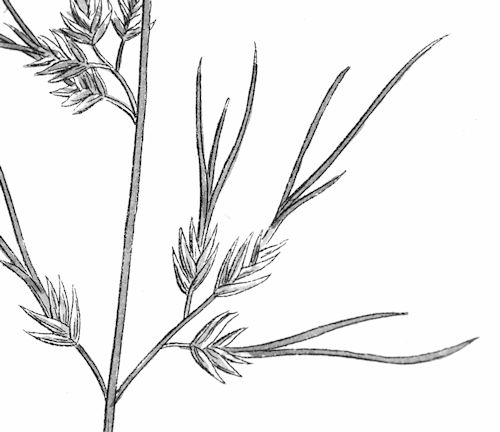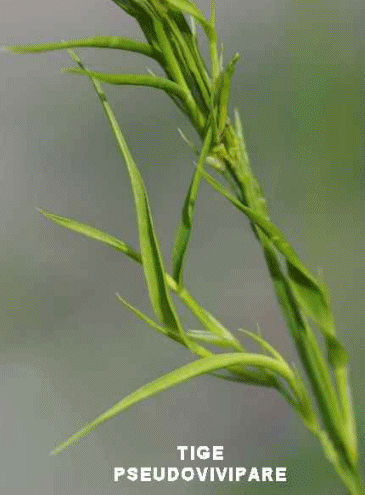PEDICELS ABSENT (no stalk below each spikelet)
|
Inflorescence in form of a SPIKE
|
Groups 1 - 2
|
|
Either:-
|
Group 1
|
Single terminal spike, with spikelets having little or no stalk
See all species in Group
1
|
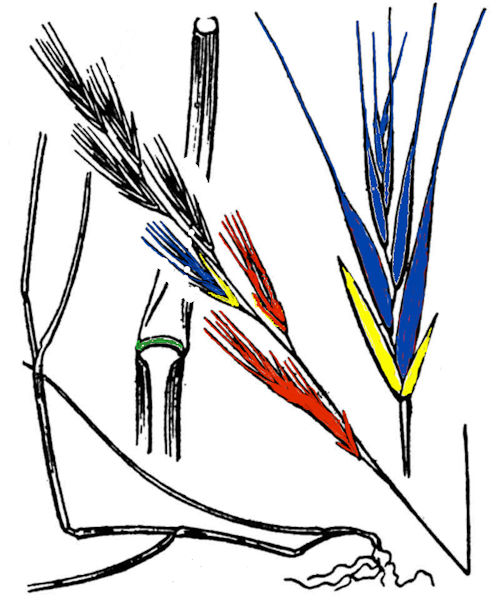
|
37 species in our area: Cynosurus, Hordeum, Hordelymus,
Gaudinia, Psilurus, Nardus, Mibora, Brachypodium, Vulpia,
Micropyrum, Lolium, Elytrigia, Aegilops (Triticum),
Elymus
|
|
or:-
|
Group 2
|
2 or more spikes from main axis: with spikelets having little or
no stalk
See all species in Group
2
|
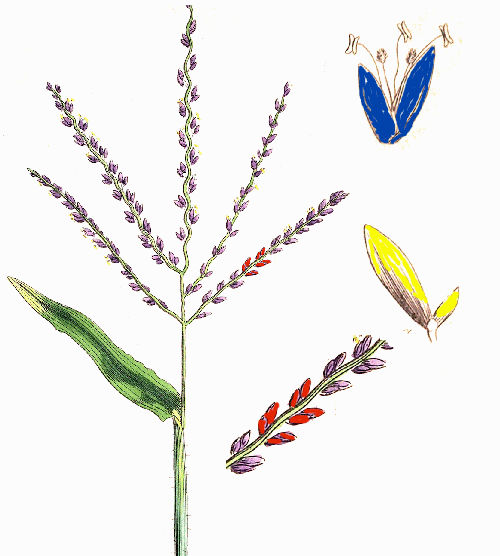
|
4 species in our area: Echinochloa, Digitaria, Cynodon, Bothriochloa
|
PEDICELS PRESENT (stalk below each spikelet) (groups 4 - 9)
|
Inflorescence in form of a PANICLE
|
|
Either:-
|
Group 3
|
Compact panicle forming a single spike: cylindrical, oval or
spherical
The pedicel (stalk under each spikelet) is not initially easy
to see
See all species in Group
3
|
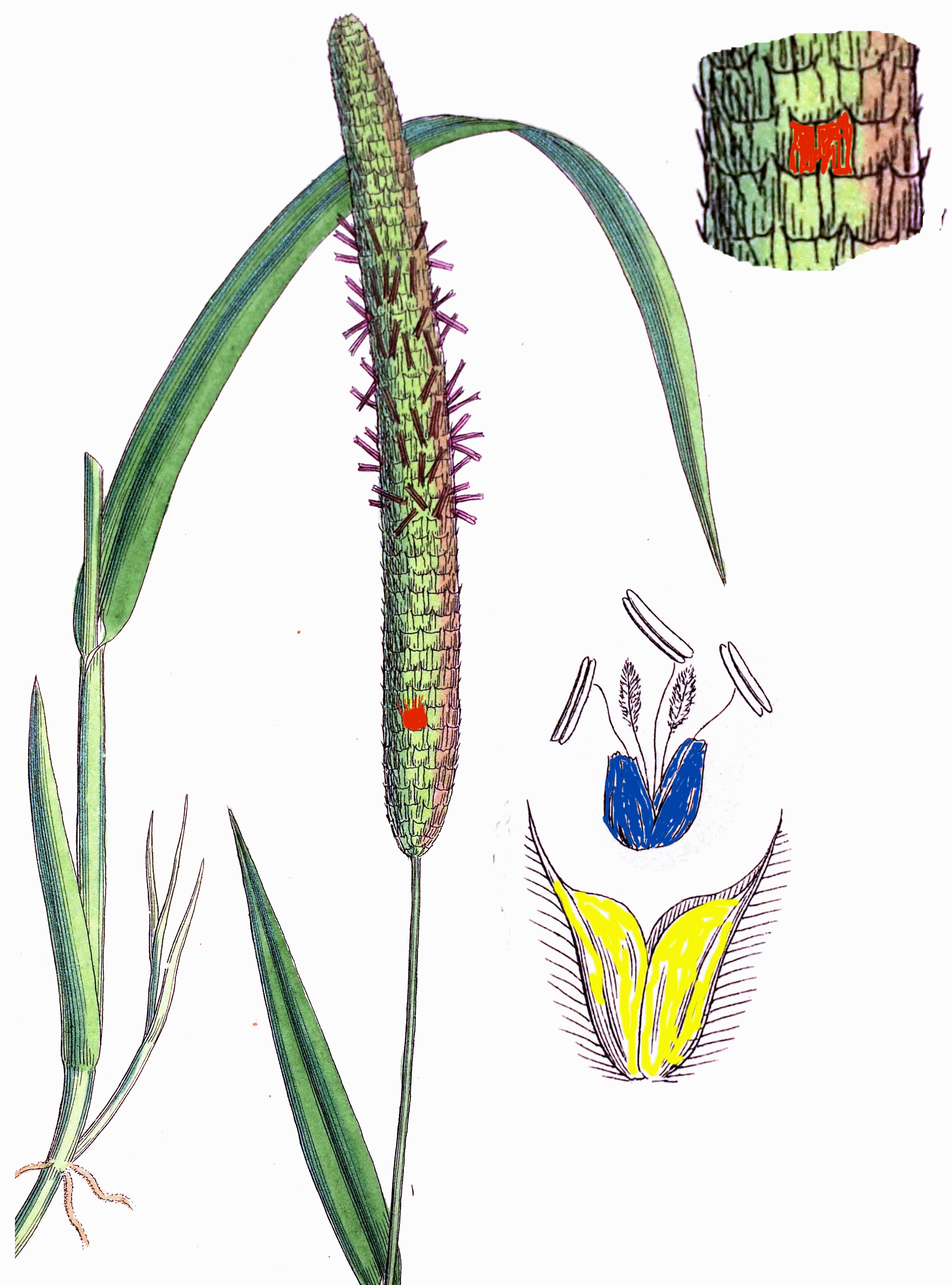
|
27 species in our area: Echinaria, Phalaris, (Cynosurus—see
group 1), Tragus, Setaria, Sesleria, Rostraria, Koeleria, Dactylis,
Anthoxsanthum, Polypogon, Gastridium, Phleum, Alopecurus,
|
|
or:-
|
Groups 4-9
|
Loose open panicle. May be tighter, more spike-like, at
some stage of flowering or seeding
2 options below
|
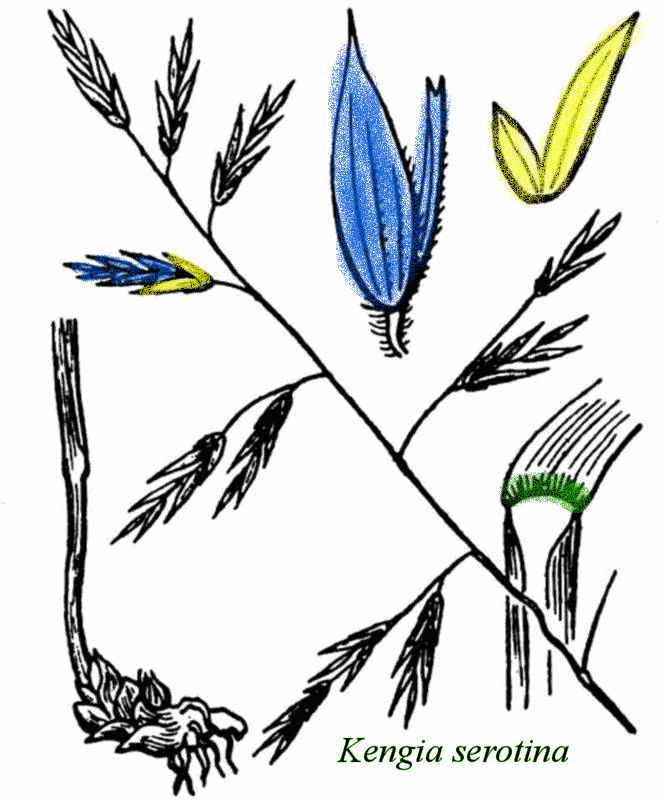
|
The large majority of grasses in the Cévennes
|
|
Either:-
(Groups 4-9)
|
Groups 4 - 5
|
Spreading panicle
only one fertile flower per spikelet (may also posess some
infertile flowers)
|
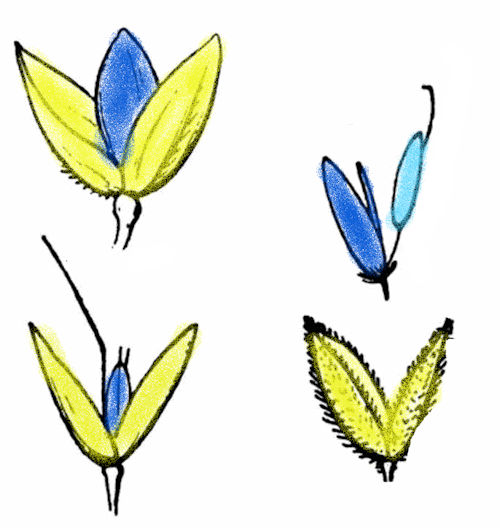
|
Needs careful dissection of spikelet to view fertile and infertile
florets
|
|
or:-
|
Groups 6 - 9
|
Spreading panicle
several fertile flowers per spikelet
|
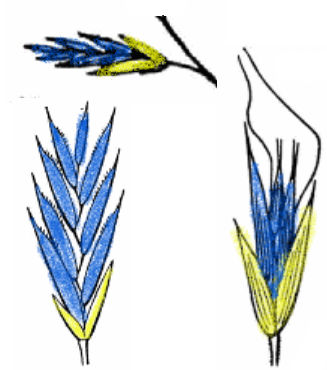
|
|
Loose open panicle. Only one fertile flower per spikelet
(may also posess some infertile flowers)
|
Groups 4 - 5
|
|
Either:-
|
Group 4a
|
Loose panicle, fertile spikelets mixed with sterile or male
spikelets: Terminal axes articulated and fragile at maturity
No follow-on; single species in group
Sorghum halepense
|
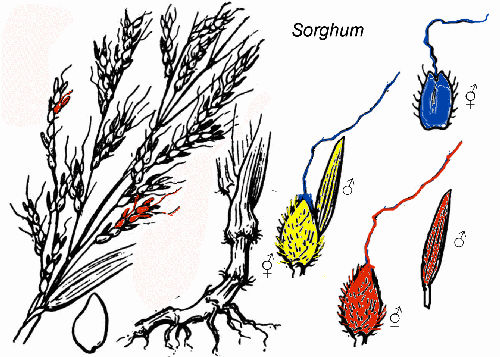
|
Single species in our area: Sorghum halepense
|
|
or:-
|
Group 4
|
Loose panicle, one fertile (hermaphrodite) floret, other
florets sterile or male i.e. 3+ glumelles (sometimes reduced to
scales):
See all species in Group
4
|
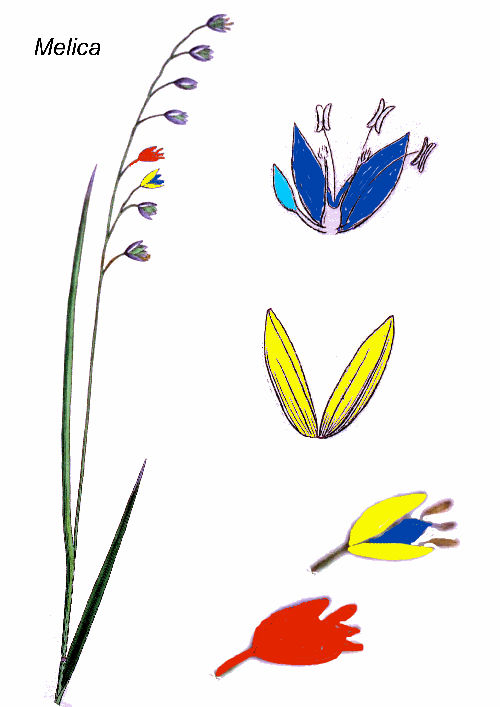
|
10 species in our area: Arrhenatherum, Panicum, Melica,
Holcus,
|
|
or:-
|
Group 5
|
Loose panicle, one fertile (hermaphrodite) floret no other
sterile i.e only 1-2 glumelles developed
See all species in Group
5
|
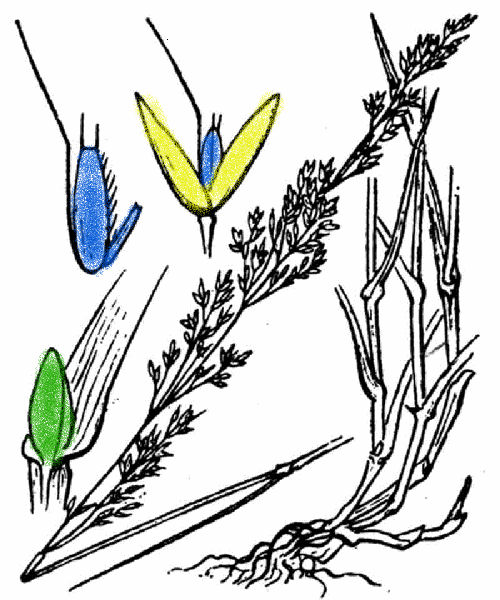
|
16 species in our area: Stipa, Calamagrostis, Agrostis,
Piptatherum (incl. Oloptum), Achnatherum, Sporobolus, Milium
|
Pedicels present, forming a loose panicle, 2+ fertile
(hermaphrodite) florets
|
Groups 6 - 9
|
|
Either:-
|
Group 6a
|
Loose panicle, 2+ fertile (hermaphrodite) florets, each
surrounded by long white hairs, giving a silky panicle:
No follow-on; single species in group
Phragmites australis
|
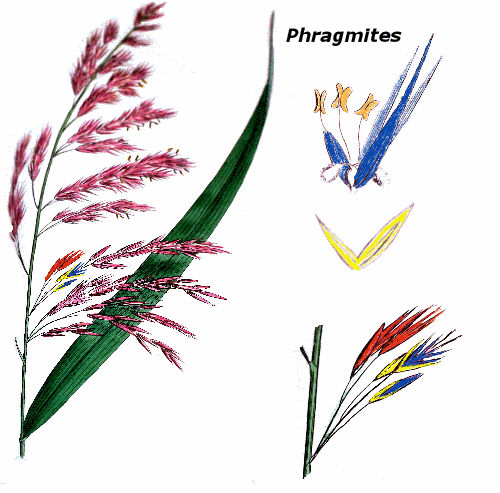
|
Single species in our area: Phragmites australis
|
|
or:-
|
Group 6
|
Loose panicle, 2+ (fertile) hermaphrodite florets, hairy ligule:
spikelets almost always without awns:
See all species in Group
6
|
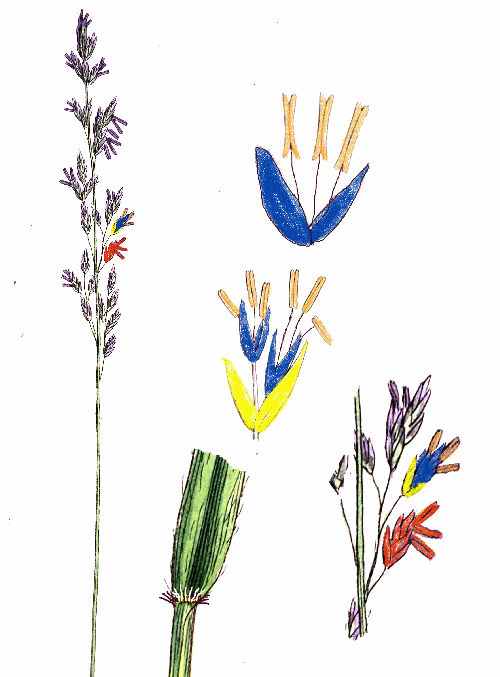
|
11 species in our area Danthonia, Eragrostis, Molinia,
Kengia
|
|
or:-
|
Groups 7-9
|
Loose panicle, 2+ fertile (hermaphrodite) florets, membranous
ligule,
Continue to see all species in Group 7-9
|
Ligule, if present, is membranous, with no hairs
|
Ignore hairs on the leaf or leaf-sheath
|
|
Loose panicle, 2+ fertile (hermaphrodite) florets, membranous
ligule
|
Groups 7 - 9
|
|
|
|
|
|
|
Either:-
(Groups 7-9)
|
Group 7
|
Loose panicle, 2+ fertile (hermaphrodite) florets, membranous
ligule, dorsal awn. Very long glumes
See all species in Group
7
|
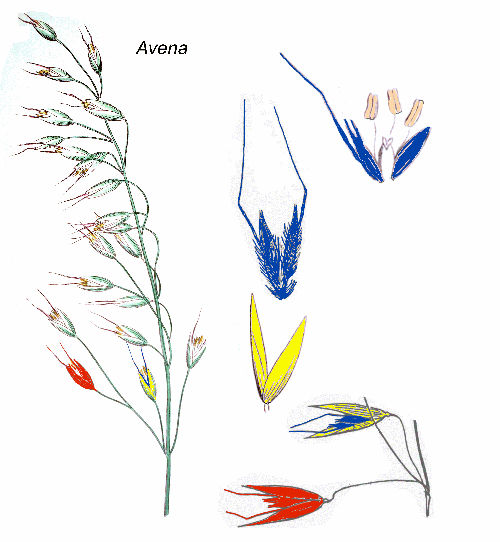
|
16 species in our area Avena, Helictochloa (=Avenula), Avenula,
Corynephorus, Aira, Deschampsia, Trisetum
|
|
|
or:-
|
Group 8
|
Loose panicle, 2+ fertile (hermaphrodite) florets, membranous
ligule, awn terminal/sub-terminal/absent; very long glumes
No species in Group 8 in our area
|
|
Small group; just 3 species in southern France, none in our
area
Includes some from Melica (see group 4), Avellinia, Airopsis
|
|
|
or:-
|
Group 9
|
Loose panicle, 2+ fertile (hermaphrodite) florets, membranous
ligule, absent or terminal/sub-terminal awn; short glumes:
See all species in Group
9
|
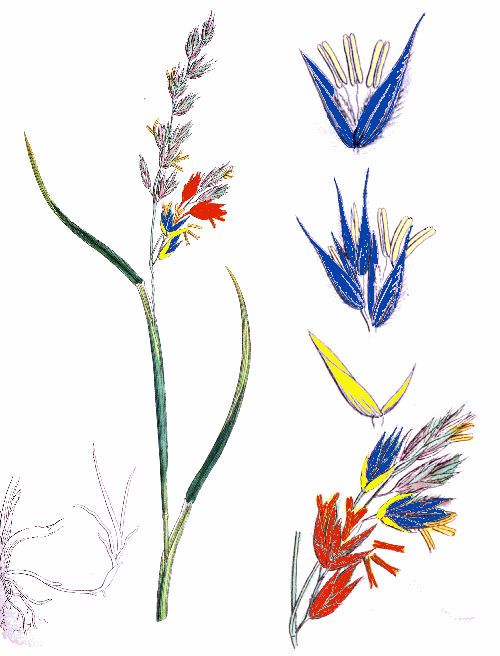
|
53 species in our area Dactylis, Briza, Bromus
(incl. Bromopsis, Ceratochloa et Anisthanta) , (Vulpia –see group
I), Festuca (incl. Patzkia), Glyceria,
Poa, Catapodium, Schedonorus
|





